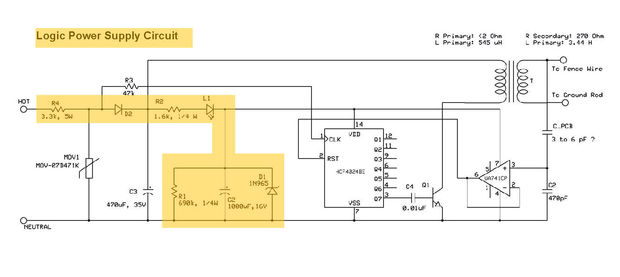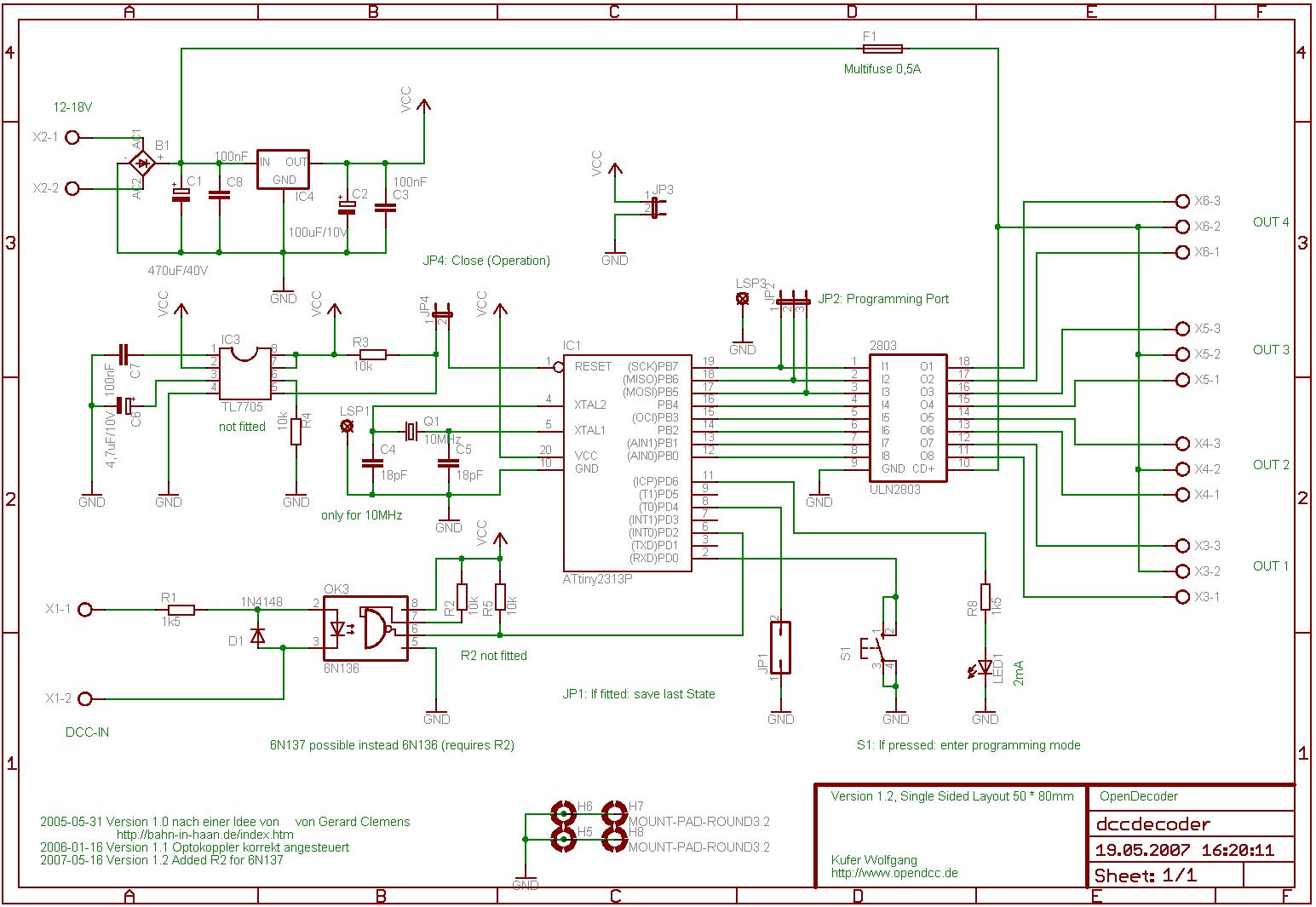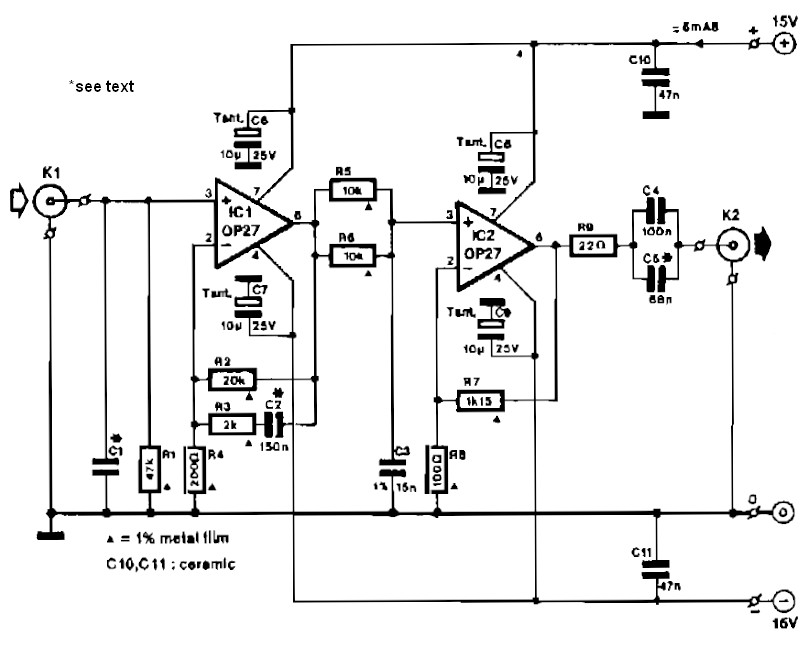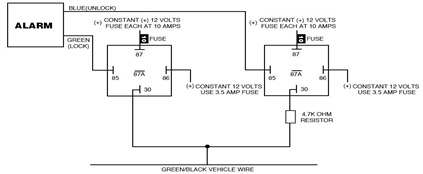
Minimum Theremin Schematic
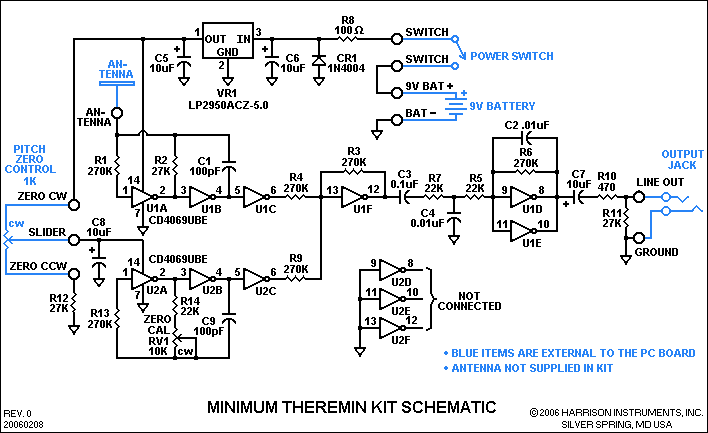
Two identical integrated circuits, U1 and U2, known as "hex inverters," are utilized for the primary functions of the theremin. These are CMOS (Complementary Symmetry Metal Oxide Semiconductor) devices commonly employed in digital circuits to perform a logic function referred to as "inversion." Each integrated circuit comprises six identical sections, which is the basis for the term "hex inverter." Sections A and B of U1, along with resistors R1, R2, and capacitor C1, create the variable oscillator of the theremin, operating within a frequency range around 73 kHz. The antenna acts as one half of a variable capacitor in the oscillator's frequency-determining network, while the player's hand serves as the other half. As the distance between the hand and the antenna changes, the capacitance fluctuates, thereby altering the oscillator's frequency. Section C of U1 buffers the output of the variable oscillator to isolate it from the rest of the circuit. Sections A and B of U2, in conjunction with resistors R13, R14, the PITCH ZERO CONTROL potentiometer, and the ZERO CAL potentiometer RV1, form the local oscillator. The local oscillator's frequency can be adjusted using RV1, a miniature trimmer type potentiometer mounted on the circuit board, to calibrate the frequency range. When RV1 is properly adjusted, the frequency of the local oscillator matches that of the variable oscillator when the hand is positioned farthest from the antenna. Under these conditions, the phase relationship between the two oscillators remains constant due to their slight capacitive coupling, resulting in no audible tone being produced. Section C of U2 buffers the output of the local oscillator for isolation. The remaining three sections of U2 are unused, with their inputs grounded. The propagation delays and output impedances of the inverters depend on the supply voltage. Consequently, the PITCH ZERO CONTROL potentiometer influences the local oscillator's frequency by varying its supply voltage. This adjustment method allows the potentiometer to be placed at a convenient distance from the circuit and antenna, as frequency variations caused by stray capacitance between the potentiometer's slider and ground are decoupled by capacitor C8. During operation, the player adjusts the potentiometer so that the theremin remains silent when the hand is far from the antenna and produces the lowest tone when the hand is at the maximum playing distance. Section F of U1, along with resistors R3, R4, and R9, functions as the mixer, heterodyning the signals from the two oscillators to generate sum and difference terms of their fundamental frequencies and harmonics. The non-linearities inherent in the transfer function of U1-F facilitate this operation, eliminating the need for a diode typically used for this purpose. Capacitor C3 acts as a DC blocking capacitor, coupling the mixer’s output to a low-pass filter composed of resistors R7 and capacitor C4. This filter attenuates the inaudible heterodyne sum products, isolating the audible difference or "beat frequency" product. The beat frequency signal is then sent to an amplifier formed by the parallel sections D and E of U1, along with gain-determining resistors R5 and R6. Capacitor C2 provides a secondary low-pass filtering stage to further suppress inaudible heterodyne products. Capacitor C7 blocks DC from the output, while resistor R10 limits the output current to prevent damage to U1, and resistor R11 ensures that C7 does not retain a residual charge after power is removed. Given the sensitivity of the theremin's oscillators to power supply fluctuations, a low-dropout voltage regulator IC, VR1, along with capacitors C5 and C6, is employed to provide a stable 5 volts. Rectifier CR1 safeguards the circuit against accidental battery reversal, and resistor R8 prevents excessive current from overheating CR1 and the battery under such conditions. The voltage drop across R8 remains below 200 millivolts, leading to minimal loss in battery life. The theremin generally consumes less than 2 milliamperes of current, operating on a 9-volt alkaline battery.Two identical integrated circuits, U1 and U2, known as "hex inverters" are used for the theremin`s primary functions. They are CMOS (Complimentary Symmetry Metal Oxide Semiconductor) devices, typically used in digital circuits to perform a logic function called "inversion.
" Each IC contains six identical sections; thus the term "hex inverter. " U1sections A and B, in conjunction with R1, R2 and C1, form the theremin`s variable oscillator that operates in a frequency range around 73kHz. The antenna forms one-half of a variable capacitor that is part of this oscillator`s frequency-determining network, and the player`s hand forms the other half.
As the distance between the hand and the antenna varies, so does the capacitance, and therefore the oscillator`s frequency. U1 section C buffers the variable oscillator`s output to provide isolation from the rest of the circuit.
U2 sections A and B, in conjunction with R13, R14, RV1, and C9, comprise the theremin`s local oscillator, adjusted with the PITCH ZERO CONTROL potentiometer and ZERO CAL potentiometer RV1. RV1 is a miniature "trimmer" type, mounted on the circuit board, used to calibrate the local oscillator`s frequency range.
With RV1 properly adjusted, the local oscillator`s frequency will equal the variable oscillator`s frequency with the hand furthest away from the antenna. Under these conditions, the phase relationship of the two oscillators will be constant due to their small, but finite capacitive coupling, so no audible tone will be produced.
U2 section C buffers the local oscillator`s output to provide isolation from the rest of the circuit. The three remaining U2 sections are not used, so their inputs are grounded. The inverters` propagation delays and output impedances are supply-dependent. Accordingly, the PITCH ZERO CONTROL potentiometer affects the local oscillator`s frequency by varying its supply voltage.
This method of adjustment permits the potentiometer to be located at any convenient distance from the circuit and antenna, since frequency variations resulting from stray capacitance between the potentiometer`s slider and ground are decoupled by capacitor C8. In use, the potentiometer is adjusted by the player so that the theremin is silent with the hand furthest away from the antenna, and produces the lowest tone when the hand is at the maximum playing distance.
U1 section F, in conjunction with R3, R4, and R9, is the theremin`s mixer. The mixer "heterodynes" the two oscillator signals, producing sum and difference terms of their fundamental frequencies and harmonics. Non-linearities inherent in U1-F`s transfer function perform this operation, eliminating the diode normally used for the purpose.
C3 is a DC blocking capacitor that couples the mixer`s output to a low-pass filter consisting of R7 and C4. This filter attenuates the mixer`s inaudible heterodyne sum products, leaving the audible difference, or "beat frequency" product.
The beat frequency signal is applied to an amplifier comprised of paralleled U1 sections D and E, and gain-determining resistors R5 and R6. Capacitor C2 provides a second low-pass filtering section to further attenuate the inaudible heterodyne products.
DC is blocked from the output by C7, with R10 limiting the output current to prevent damage to U1 and R11 preventing C7 from maintaining a residual charge after power is removed. Because the theremin`s oscillators have some sensitivity to power supply variations, VR1, a low-dropout voltage regulator IC, with C5 and C6, is used to furnish a steady 5 volts.
Rectifier CR1 protects the circuit from accidental battery reversal, and R8 prevents excessive current from causing CR1 and the battery to heat under such a condition. The voltage drop across R8 is less than 200 millivolts, causing a relatively insignificant loss in battery life.
The theremin typically uses less than 2 milliamperes of current, so a 9 volt alkaline battery 🔗 External reference
" Each IC contains six identical sections; thus the term "hex inverter. " U1sections A and B, in conjunction with R1, R2 and C1, form the theremin`s variable oscillator that operates in a frequency range around 73kHz. The antenna forms one-half of a variable capacitor that is part of this oscillator`s frequency-determining network, and the player`s hand forms the other half.
As the distance between the hand and the antenna varies, so does the capacitance, and therefore the oscillator`s frequency. U1 section C buffers the variable oscillator`s output to provide isolation from the rest of the circuit.
U2 sections A and B, in conjunction with R13, R14, RV1, and C9, comprise the theremin`s local oscillator, adjusted with the PITCH ZERO CONTROL potentiometer and ZERO CAL potentiometer RV1. RV1 is a miniature "trimmer" type, mounted on the circuit board, used to calibrate the local oscillator`s frequency range.
With RV1 properly adjusted, the local oscillator`s frequency will equal the variable oscillator`s frequency with the hand furthest away from the antenna. Under these conditions, the phase relationship of the two oscillators will be constant due to their small, but finite capacitive coupling, so no audible tone will be produced.
U2 section C buffers the local oscillator`s output to provide isolation from the rest of the circuit. The three remaining U2 sections are not used, so their inputs are grounded. The inverters` propagation delays and output impedances are supply-dependent. Accordingly, the PITCH ZERO CONTROL potentiometer affects the local oscillator`s frequency by varying its supply voltage.
This method of adjustment permits the potentiometer to be located at any convenient distance from the circuit and antenna, since frequency variations resulting from stray capacitance between the potentiometer`s slider and ground are decoupled by capacitor C8. In use, the potentiometer is adjusted by the player so that the theremin is silent with the hand furthest away from the antenna, and produces the lowest tone when the hand is at the maximum playing distance.
U1 section F, in conjunction with R3, R4, and R9, is the theremin`s mixer. The mixer "heterodynes" the two oscillator signals, producing sum and difference terms of their fundamental frequencies and harmonics. Non-linearities inherent in U1-F`s transfer function perform this operation, eliminating the diode normally used for the purpose.
C3 is a DC blocking capacitor that couples the mixer`s output to a low-pass filter consisting of R7 and C4. This filter attenuates the mixer`s inaudible heterodyne sum products, leaving the audible difference, or "beat frequency" product.
The beat frequency signal is applied to an amplifier comprised of paralleled U1 sections D and E, and gain-determining resistors R5 and R6. Capacitor C2 provides a second low-pass filtering section to further attenuate the inaudible heterodyne products.
DC is blocked from the output by C7, with R10 limiting the output current to prevent damage to U1 and R11 preventing C7 from maintaining a residual charge after power is removed. Because the theremin`s oscillators have some sensitivity to power supply variations, VR1, a low-dropout voltage regulator IC, with C5 and C6, is used to furnish a steady 5 volts.
Rectifier CR1 protects the circuit from accidental battery reversal, and R8 prevents excessive current from causing CR1 and the battery to heat under such a condition. The voltage drop across R8 is less than 200 millivolts, causing a relatively insignificant loss in battery life.
The theremin typically uses less than 2 milliamperes of current, so a 9 volt alkaline battery 🔗 External reference
